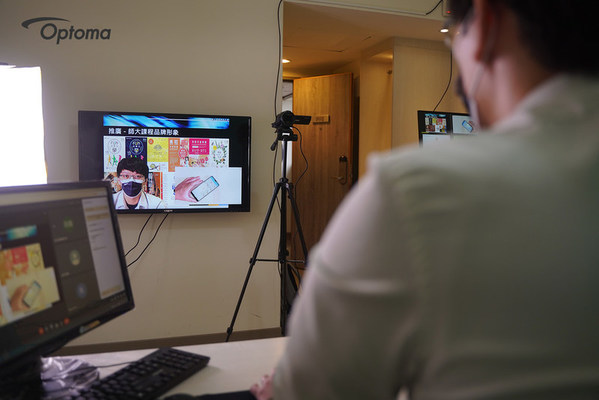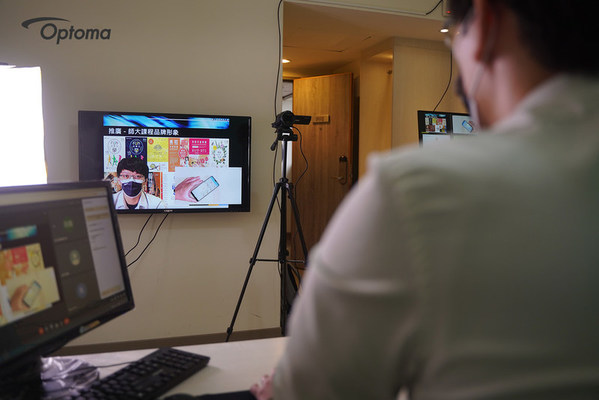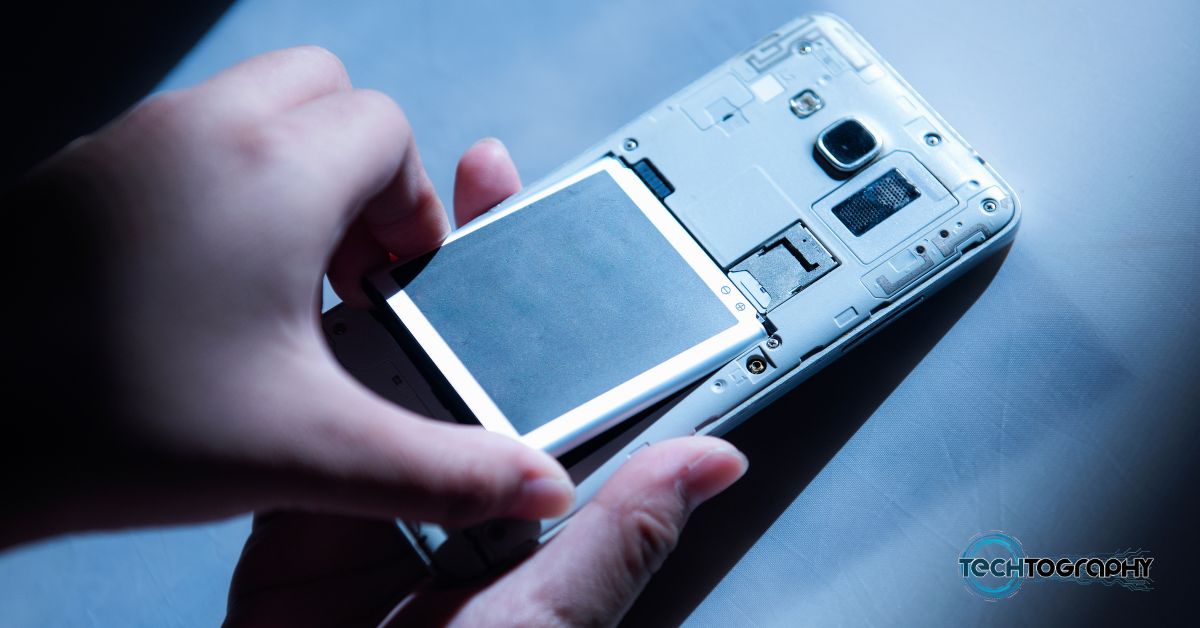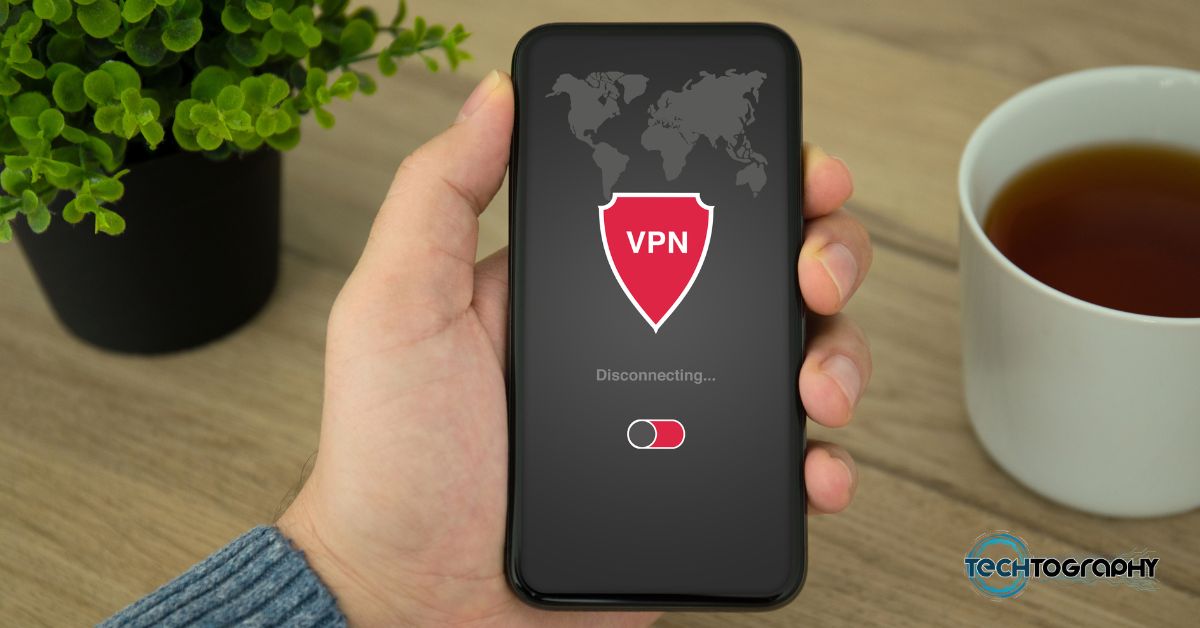TAIPEI, Nov. 8, 2021 /PRNewswire/ — National Taiwan Normal University (NTNU), Taiwan’s leading teacher training institution, and Optoma, a world-leading provider of visual display products, formally announced the launch of a new collaborative effort, Optoma Immersive Long-distance Teaching Solutions, at NTNU Extension, School of Continuing Education (NTNU SCE) on November 4th.
Combining the advantages of the two parties in education and technology, the cooperation will strive to transform digital education by way of a joint effort involving NTNU’s School of Continuing Education, Industrial Liaison Office and Office of Research and Development, and Optoma. The results of the effort will also serve as a demonstration site for education technology for other institutions, chiefly research facilities and universities as well as primary, secondary and high schools, with the goal of being on par with international standards. Dean Yannan Hu, NTNU Extension, School of Continuing Education, said that, with the development of a digital teaching model and the impact of the COVID-19 pandemic, it has become inevitable that a transition has already taken place from face-to-face teaching in classrooms to distance learning, or a combination of both ways. Online learning courses have conceivable development potential as they have generally become much more accepted by students and teachers alike. Teaching has moved from the physical to the cloud, and it has become possible to learn on the cloud 24 hours a day. This collaboration brings technology to both the physical classroom as well as to remote online education applications in a more user-friendly way. With an excellent faculty, top-notch teaching materials and the teaching experience of NTNU’s professors, we look forward to establishing a new generation of digital teaching standards and a vision for the education community.
Gordon Wu, Head of Optoma Asia Pacific, said Optoma has been actively investing in more sophisticated projection technologies and large display solutions in recent years. In addition to the corporate and home appliance markets, Optoma has invested significantly in applications for digital education with an eye to developing and integrating cloud, mobile phones and control software into EdTech, which can be flexibly applied in both projection display devices and as an overall solution for immersive installations. At present, EdTech mostly focuses on hardware equipment, which is not conducive to the effective integration of existing systems and teaching tools. The cooperation between NTNU and Optoma will not only solve some of the issues related to distance learning during the pandemic, but also jointly develop an e-Learning curriculum and undertake suitability research, so as to comprehensively improve the competitiveness of digital education and the instructors who use it. The Optoma large-size interactive flat panel, which plays an important role in the program, will also be formally launched in Taiwan in the first half of 2022.
Optoma Immersive Remote Teaching Solutions integrates with the Moodle learning management system, through which teachers can directly obtain lesson preparation materials after login with account and password. Unlike the previous method of copying teaching materials via a USB, teachers can now switch between textbooks, interact with them as well as integrate recorded or live events into the course material via a mobile app. They can also flexibly integrate software programs commonly used in online learning, such as Google Meet, Microsoft Teams and Cisco WebEx, among others. Both teachers and students will find that interacting with the course material significantly more intuitive than previously.
In addition to controlling the content and 3D objects as well as sharing required teaching content in real time, teachers can also write and draw directly on the screen with the 65-86" interactive flat panel and proprietary whiteboard software. Finally, they can integrate the Virtual studio green screen through the Optoma/Calibre image processor, so that the teacher’s image can be superimposed onto the textbook or teaching materials. The immersive effect allows students to experience the same visual effects just as if they were in the classroom, and, by the same token, vastly enhance their engagement. This virtual classroom setup can support hands-on instruction as well as a hybrid approach. The hands-on instruction is made possible by way of a second camera that allows for the transmission of real-time images such as art, calligraphy or even engineering , physics and chemistry experiments, while the hybrid approach can solve the challenges of engaging in collaborative efforts when students are in different locations.




